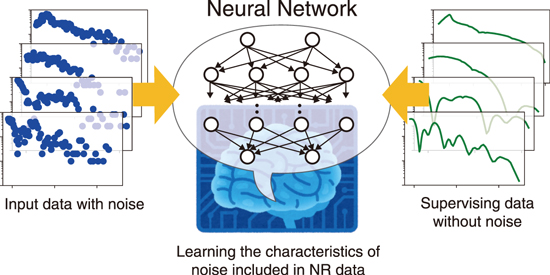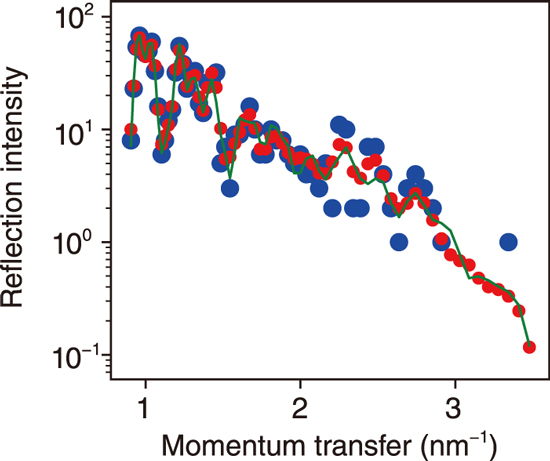
Fig.5-5 Schematic illustration of deep learning to remove the noise form neutron reflectometry (NR) data

Fig.5-6 NR data before and after noise reduction
Neutron reflectometry (NR) has been employed to analyze the structure of surface and interfaces in various materials such as polymer films and magnetic devices. A typical NR measurement requires a data acquisition time of more than several tens of minutes for a single sample of size more than a few centimeters. Therefore, the conventional NR technique cannot be used for analyzing dynamic samples whose structures vary in time at a temporal scale smaller than an hour. Moreover, because the limited machine time of neutron instruments is shared by researchers worldwide, the reduction in measurement time for a sample will be of great benefit. However, the shorter the acquisition time of NR measurements, the larger is the statistical noise in the data. The accuracy of the analysis result degrades with a decrease in the measurement time. In the current work, we developed a novel data-processing method to reduce the data acquisition time of NR measurements without compromising the accuracy of the experimental result by introducing deep learning.
A neural network with hidden layers consisting of one-dimensional convolution, batch normalization, and the rectified linear unit was used for supervised deep learning. The dataset for the training was generated by the neutron event simulator developed for the neutron reflectometer installed at Materials and Life Science Experiment Facility of the Japan Proton Accelerator Research Complex (J-PARC). After generating more than 200000 layered structures, the theoretical NR profile was calculated, and the experimental NR data with a short acquisition time were simulated for each structure as the supervising and input data for deep learning (Fig.5-5). The blue circles in Fig.5-6 show the experimental data obtained in a 20-fold shorter acquisition time as compared with a conventional experiment. On the other hand, the green curve in Fig.5-6 indicates the data obtained over a longer acquisition time, indicating the low noise in the NR data. A comparison of these figures shows that the NR data points obtained in the short acquisition time are scattered by a large statistical noise. The red circles in Fig.5-6 were obtained by removing the noise component from the NR data obtained over the short time (blue data in Fig.5-6) by data processing with deep learning. The processed data are in good agreement with the NR data without noise (green curve). This indicates that the deep learning–based noise reduction method enables reduction of the measurement time by over 10 times without loss of accuracy of the experimental data.
The developed deep-learning technique for the NR data effectively removes the statistical noise from the experimental data acquired in a short measurement time and enables the acceleration of the NR measurement by over 10 times. This method can open up a new horizon in the structural analysis of the surface and interface of various materials.
This work was supported by JSPS KAKENHI Grant-in-Aid for Scientific Research (B) (JP19H02768) and JST-Mirai Program (JPMJMI18A2).
(Hiroyuki Aoki)